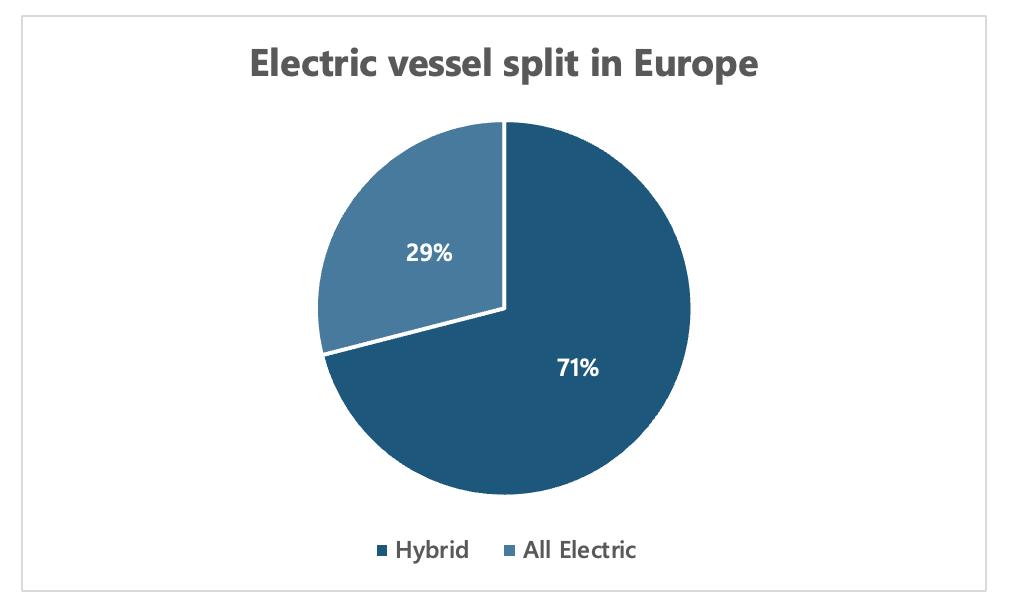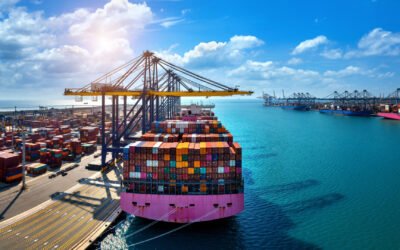• The vessel charging technology adoption is slow across the globe mainly due to lack of global vessel charging standards which is expected to impact the electrification of maritime sector if not taken care of.
• The reason for the lack of global charging standards is that there is tremendous disparity in the battery size in each vessel followed by variation in the power requirements for charging of these vessels.
• Regulatory bodies, governments, funding agencies, port authorities and the distribution network operators would be vital in establishing the vessel charging standards.
Vessel charging is needed for vessels that have an onboard energy storage system which charges as the vessel is docked at the port. This helps vessel sail from one point to another while carrying goods and passengers without emitting CO2 for a set period. Vessel charging technology is being termed as a transformational technology which has the potential to reduce fuel consumption, maintenance costs and air emissions from the maritime sector. In recent times the maritime industry has observed significant increase in both the all-electric and hybrid vessels being manufactured or retrofitted globally. Currently, the electric vessel split of Europe indicates that nearly 71% of the electric vessels are hybrid vessels while only 29% are all electric vessels. It is significant to note that electric vessels are categorized into hybrid vessels and all electric vessels.
However, the vessel charging technology adoption is slow across the globe mainly due to lack of global vessel charging standards which is expected to impact the electrification of maritime sector if not taken care of.
Reasons for Lack of Standards for Vessel Charging
The reason for the lack of global charging standards is that there is tremendous disparity in the battery size in each vessel followed by variation in the power requirements for charging of these vessels. The battery sizing for the vessel is conducted while keeping in mind a number of factors that include space available on the ship, dependence on battery of ship, battery life, battery charge and discharge capacity. On the other hand, charging power requirement depends on voltage, docking time, grid power, vessel and crew operating expense and distance to MV cubicle.
Another reason that is responsible for the lack of global charging standards for vessel charging is the disparity in the connection systems (Manual and Automatic). The connection type depends on how much a port authority is willing to invest in the electrification of the maritime sector, especially the vessel charging followed by overall infrastructure of the port itself. Currently, manual charging is prevalent in the vessel charging industry, but the technology has several constraints which include the requirement of crew to connect and disconnect charging. This in turn increases crew cost and limits the power transfer capability due to weight issues. On the other hand, automatic charging systems are less common mainly due to lack of financial support for various components related to automatic charging, for instance a static arm for lifting cables.

Source: Power Technology Research
Need for Global Standards for Vessel Charging
If vessel charging standards were adopted globally, it would bring down the cost of developing vessel charging infrastructure as different OEMs would be following a set standard. It is also expected that the standardization would ensure a simplified architecture and infrastructure. On the other hand, the ports will not have to spend their limited resources on R&D of robust vessel charging technology. Availability of higher power charging at the ports is also a bottleneck as far as the electrification of the maritime sector is concerned, which can be removed as the standardization takes place. Interoperability between chargers of different OEMs can also be ensured through standardization. Once the standardization takes place procurement, installation and operation of vessel charging systems would become seamless in turn pushing ports to move towards installing vessel charging systems which would expand the market.

Source: Power Technology Research
Looking Ahead
The advanced economies are moving towards electrification of the maritime sector as well in a bid to achieve net zero emissions by 2050 as committed under the Paris Agreement in 2015. Power Technology Research observed that there has been a significant increase in the number of electric vessels at least in the developed economies in recent years including the hybrid and all electric vessels. But the industry has failed to unlock true potential mainly because of lack of vessel charging standards that in turn impeded the widespread deployment of vessel charging. PTR believes that in order to electrify the maritime industry standardization of vessel charging would play a significant role. Furthermore, regulatory bodies, governments, funding agencies, port authorities and the distribution network operators would be vital in establishing the vessel charging standards.
Shore to Ship Service Overview
The research presented in this article is from PTR's Shore to Ship service. For information about this service please submit a request shown below.
Contact Sales:
Europe
+49-89-12250950
Americas
+1 408-604-0522
Japan
+81-80-7808-1378
GCC/Rest of APAC
+971-58-1602441
More about our:
Shore to Ship Power Market Research
Recent Insights
Sustainability Across Sectors: Highlights from GreenTech Festival 2024
Recently, I had the privilege to attend and present at the Greentech Festival, an excellent event in the realm of sustainability. This influential...
US and EU Strategies in Smart Buildings
Download Service Overview The EU and USA aim to decarbonize their building sectors to meet emission reduction targets. Initiatives like the Home...
Unveiling the Transformative Journey of Port Electrification
OPS installation is on the rise globally as countries prioritize their environmental objectives and seek to minimize the ecological impact of...


